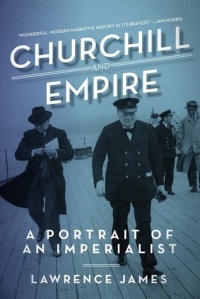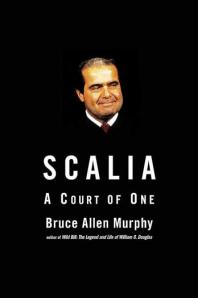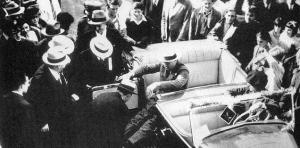By Lawrence James. Pegasus Books, 452 pages, $28.95
Reviewed by Jules Wagman
An imperialist from birth, Winston Churchill held firm to the notion that the British Empire was a great gift to the world, that it raised primitive people out of the torpor of aimless existence and pointed them toward useful lives, and that India was the crown jewel of it all.
Churchill’s greatest glory while he was British Prime Minster was in rallying his people, both at home and across the Empire, against Adolf Hitler in 1940, convincing them to hold fast until the free world caught up to him. His heart and soul were firmly rooted in the best that Victorian England had to offer and he used those roots to urge England and the Empire on to victory.
British historian Lawrence James has written two other books on the empire. In this one, he studies Churchill, who has frequently been ranked as the greatest man of the 20th century. Agreeing with that assessment, James first turns to Churchill’s years in the colonies for validation.

Imperial geo-political considerations were always uppermost in Churchill’s mind whenever he had to make major strategic decisions in World War II. Domestic matters were included only when they intruded on Churchill’s imperial preoccupations.
Churchill’s first posting was to Gen. Sir Herbert Kitchener’s staff in 1898 in India just before the battle of Omdurman. “Imperial glory was followed by imperial shame,” James writes, as injured Dervishes were left to die or were shot and bayoneted.
Kitchener’s “callousness after the battle appalled a young man with quasi-religious faith in a humanitarian Empire.” As a Cabinet minister he battled “frustrated and vengeful subordinates who suspended the moral principles which he believed were the foundations of Empire.”
James writes, “Churchill repeatedly insisted that the Empire was a precious asset, not just for Britain, but for civilization as a whole.” James argues that the British Empire, for all its faults, was more benign in its treatment of native peoples than the empires of Germany, Japan Italy, and even France.
Churchill absorbed the credo of the Anglo-Saxon imperialist and early on sought fair treatment for all peoples, albeit with the additional caveat that the Crown always knew best.
While World War I was very much about empires, James writes that World War II was also an “imperial war…whose [Axis] objectives included the elimination of British influence in the Mediterranean and Middle East and the annexation of British colonies in Africa, the Far East and the Pacific.
James argues, “[I]mperial geo-political considerations were…always uppermost in Churchill’s mind whenever he had to make major strategic decisions” in World War II. Throughout his career, “Domestic matters [were] included only when they intruded on Churchill’s imperial preoccupations.”
That imperial emphasis inevitably helped lead to Churchill’s defeat at the polls in the summer of 1945. The British people, having endured and won the war after six years, were ready to look inward to their own needs, rather than worry about what was happening in colonies and dominions.
When the prospects in World War II were at a low point in 1942 and there was clamoring for freeing India and other possessions, he declared, “I have not become the King’s First Minister to preside over the liquidation of the British Empire.”
And yet, that was precisely what happened after the war. By the time of his death in 1965, India was two free nations, African colonies were gaining their independence, and British control of Middle Eastern oil had passed to the United States.
James succinctly describes the tensions in relations with President Franklin D. Roosevelt and Soviet Marshall Joseph Stalin. Churchill’s view was always an imperial one.
Jules Wagman has been reviewing books since 1966.
©2014 by Jules L. Wagman

